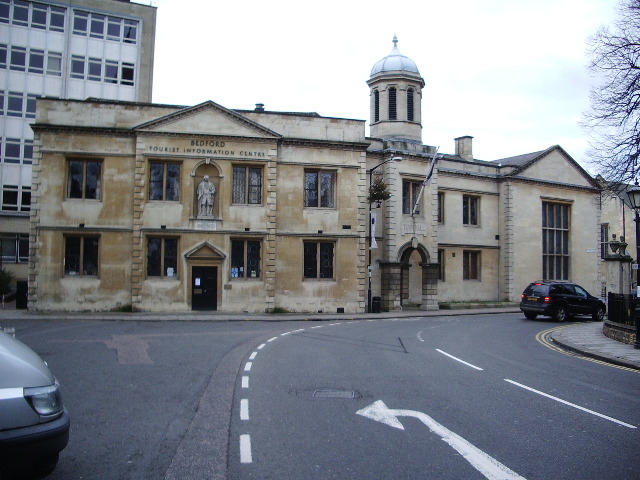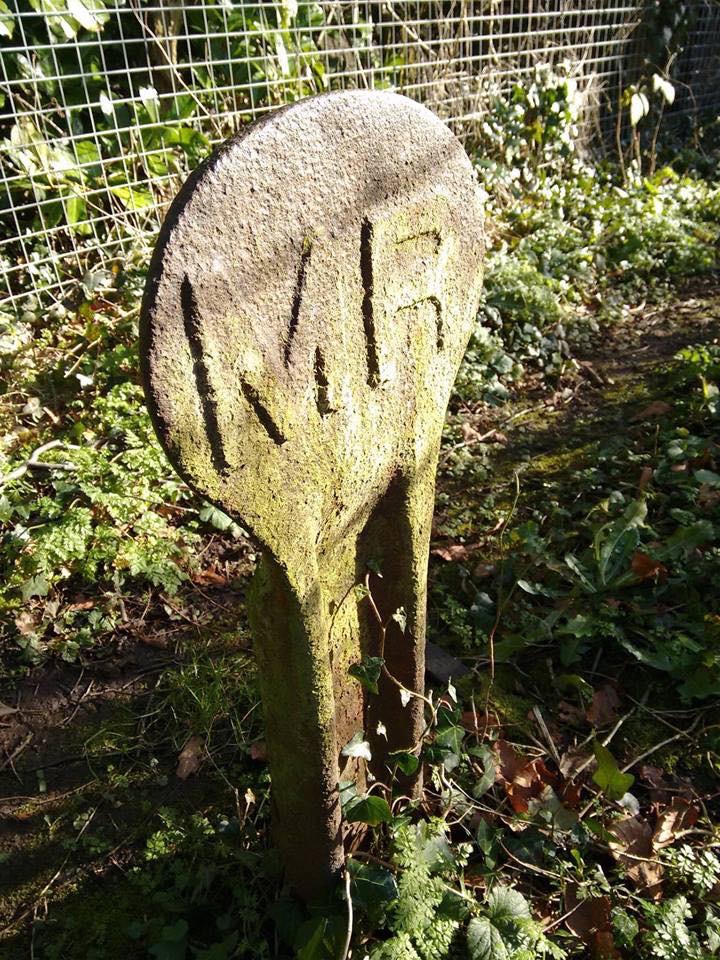|
Freeman's Common
Freeman's Common is a 12.5 hectare area of land situated to the north of Bedford, in the parish of Ravensden. It was created in 1858. Over many years it has been the focus of local dispute as to whether the site should be developed. Despite the name, it is not in fact registered as common land. History On 12 June 1797, an inclosure award created the Bedford Freeman's Common charity, following a 1795 Act of Parliament (35 Geo. III c.87) which covered "Parishes of St. Paul, St. Peter and St. Cuthbert, Bedford". This charity held land which in 1858 was sold to the Midland Railway to build Bedford railway station. A new Freeman's Common was purchased near Ravensden to replace the original. In 1867 Freemen's Common formed part of the course for the Grand National Hunt Steeplechases, which ran from close to Clapham Wood across to Kimbolton Road. The Prince of Wales (later Edward VII) attended the steeplechases on the second day, arriving in Bedford via the Midlands Railway. It a ... [...More Info...] [...Related Items...] OR: [Wikipedia] [Google] [Baidu] |
Ravensden
Ravensden is a village and civil parish located in the Borough of Bedford in Bedfordshire, England. The parish borders the town of Bedford, with Mowsbury Park, farmland and Freeman's Common acting as a buffer between the two settlements. The village hosts a primary school (Ravensden CofE Primary Academy), and a pub called ''The Horse and Jockey'', as well as All Saints Church, dating to the 12th century. There is also a village hall. For elections to Bedford Borough Council, Ravensden is part of Great Barford ward, and for national elections it is part of the North East Bedfordshire parliamentary constituency. A housing estate A housing estate (or sometimes housing complex or housing development) is a group of homes and other buildings built together as a single development. The exact form may vary from country to country. Popular throughout the United States a ... called Woodlands Park was established in the southern part of Ravensden parish in the late 2000s. T ... [...More Info...] [...Related Items...] OR: [Wikipedia] [Google] [Baidu] |
Bedford
Bedford is a market town in Bedfordshire, England. At the 2011 Census, the population of the Bedford built-up area (including Biddenham and Kempston) was 106,940, making it the second-largest settlement in Bedfordshire, behind Luton, whilst the Borough of Bedford had a population of 157,479. Bedford is also the historic county town of Bedfordshire. Bedford was founded at a ford on the River Great Ouse and is thought to have been the burial place of King Offa of Mercia, who is remembered for building Offa's Dyke on the Welsh border. Bedford Castle was built by Henry I, although it was destroyed in 1224. Bedford was granted borough status in 1165 and has been represented in Parliament since 1265. It is known for its large population of Italian descent. History The name of the town is believed to derive from the name of a Saxon chief called Beda, and a ford crossing the River Great Ouse. Bedford was a market town for the surrounding agricultural region from the early Middle ... [...More Info...] [...Related Items...] OR: [Wikipedia] [Google] [Baidu] |
Bedford Borough Council
Bedford Borough Council is the local authority of the Borough of Bedford in Bedfordshire, England. It is a unitary authority, having the powers of a non-metropolitan county and district council combined. The executive of the council is the directly elected mayor of Bedford. It is a member of the East of England Local Government Association. The council was founded in 1974 as Bedford District Council, being renamed North Bedfordshire Borough Council in 1975. In 1992 it changed its name again to become Bedford Borough Council. Until 2009 it was a lower-tier district council, with county-level services provided by Bedfordshire County Council. On 1 April 2009, the Bedfordshire County Council Bedfordshire County Council was the county council of the non-metropolitan county of Bedfordshire in England. It was established on 24 January 1889 and was abolished on 1 April 2009. The county council was based in Bedford. In 1997 Luton Boroug ... ceased to exist, at which point Bedford Bo ... [...More Info...] [...Related Items...] OR: [Wikipedia] [Google] [Baidu] |
Midland Railway
The Midland Railway (MR) was a railway company in the United Kingdom from 1844. The Midland was one of the largest railway companies in Britain in the early 20th century, and the largest employer in Derby, where it had its headquarters. It amalgamated with several other railways to create the London, Midland and Scottish Railway at grouping in 1922. The Midland had a large network of lines emanating from Derby, stretching to London St Pancras, Manchester, Carlisle, Birmingham, and the South West. It expanded as much through acquisitions as by building its own lines. It also operated ships from Heysham in Lancashire to Douglas and Belfast. A large amount of the Midland's infrastructure remains in use and visible, such as the Midland main line and the Settle–Carlisle line, and some of its railway hotels still bear the name '' Midland Hotel''. History Origins The Midland Railway originated from 1832 in Leicestershire / Nottinghamshire, with the purpose of serving the nee ... [...More Info...] [...Related Items...] OR: [Wikipedia] [Google] [Baidu] |
Bedford Railway Station
Bedford railway station (formerly Bedford Midland Road and historically referred to on some signage as Bedford Midland) is the larger of two railway stations in the town of Bedford in Bedfordshire, England. It is on the Midland Main Line from London St Pancras to the East Midlands and the terminus of the Marston Vale line from Bletchley through Bedford St Johns. History The original station was built by the Midland Railway in 1859 on its line to the Great Northern at Hitchin. It was on land known as "Freemen's Common" approximately south of the current station on Ashburnham Road. The London and North Western Railway (LNWR) also had a station on its line between and . The Midland crossed it on the level and there was a serious collision when an LNWR train passed a red signal. (Curiously, both drivers were named John Perkins). Following this accident, the Midland built a flyover in 1885. The extension to opened in 1868. The connection to ceased public services duri ... [...More Info...] [...Related Items...] OR: [Wikipedia] [Google] [Baidu] |
National Hunt Chase Challenge Cup
The National Hunt Challenge Cup is a Grade 2 National Hunt steeplechase in Great Britain for amateur riders which is open to horses aged five years or older. It is run on the Old Course at Cheltenham over a distance of about 3 miles 6 furlongs (3 miles 5 furlongs and 201 yards, or 6,018 metres), and during its running there are twenty-three fences to be jumped. The race is for novice chasers, and it is scheduled to take place each year during the Cheltenham Festival in March. History Now in its year, the National Hunt Chase has been run more times than any other event at the Cheltenham Festival. The Grand Annual is older, but that race was absent for much of the late 19th century. During the early part of its history it was held at various venues, including its present home in 1904 and 1905. It was transferred more permanently to Cheltenham in 1911, when it became part of the new two-day National Hunt Meeting. Until the 1930s it ... [...More Info...] [...Related Items...] OR: [Wikipedia] [Google] [Baidu] |
Edward VII
Edward VII (Albert Edward; 9 November 1841 – 6 May 1910) was King of the United Kingdom of Great Britain and Ireland and Emperor of India, from 22 January 1901 until his death in 1910. The second child and eldest son of Queen Victoria and Prince Albert of Saxe-Coburg and Gotha, and nicknamed "Bertie", Edward was related to royalty throughout Europe. He was Prince of Wales and heir apparent to the British throne for almost 60 years. During the long reign of his mother, he was largely excluded from political influence and came to personify the fashionable, leisured elite. He travelled throughout Britain performing ceremonial public duties and represented Britain on visits abroad. His tours of North America in 1860 and of the Indian subcontinent in 1875 proved popular successes, but despite public approval, his reputation as a playboy prince soured his relationship with his mother. As king, Edward played a role in the modernisation of the British Home Fleet and the re ... [...More Info...] [...Related Items...] OR: [Wikipedia] [Google] [Baidu] |
Times & Citizen
The ''Times & Citizen'' is a free local newspaper published on Thursdays in Bedford, Bedfordshire, England. The newspaper is distributed all over the Borough of Bedford and much of Mid Bedfordshire. Current circulation is around 31,000. History First published in 1845, the ''Bedford Times'' was the first regular paper published for the Bedfordshire area. A rival paper, the ''Bedfordshire Independent'', was established in 1857, but the two titles merged in 1859 to become the ''Bedford Times and Bedfordshire Independent''. The title became the ''Bedfordshire Times and Independent'' in 1872, ''The Bedfordshire Times and Bedfordshire Standard'' in 1939, and simply the ''Bedfordshire Times'' in 1965. The newspaper had an unbroken weekly production record throughout this period, apart from one week in 1959 due to a printing industry strike. In 1995, the ''Times'' merged with another local paper, the ''Bedford Citizen'', to become the ''Times & Citizen''. Two years later in 1997 The pap ... [...More Info...] [...Related Items...] OR: [Wikipedia] [Google] [Baidu] |
House Of Industry Estate
A house is a single-unit residential building. It may range in complexity from a rudimentary hut to a complex structure of wood, masonry, concrete or other material, outfitted with plumbing, electrical, and heating, ventilation, and air conditioning systems.Schoenauer, Norbert (2000). ''6,000 Years of Housing'' (rev. ed.) (New York: W.W. Norton & Company). Houses use a range of different roofing systems to keep precipitation such as rain from getting into the dwelling space. Houses may have doors or locks to secure the dwelling space and protect its inhabitants and contents from burglars or other trespassers. Most conventional modern houses in Western cultures will contain one or more bedrooms and bathrooms, a kitchen or cooking area, and a living room. A house may have a separate dining room, or the eating area may be integrated into another room. Some large houses in North America have a recreation room. In traditional agriculture-oriented societies, domestic animals suc ... [...More Info...] [...Related Items...] OR: [Wikipedia] [Google] [Baidu] |


_railway_station.jpg)
.jpg)
